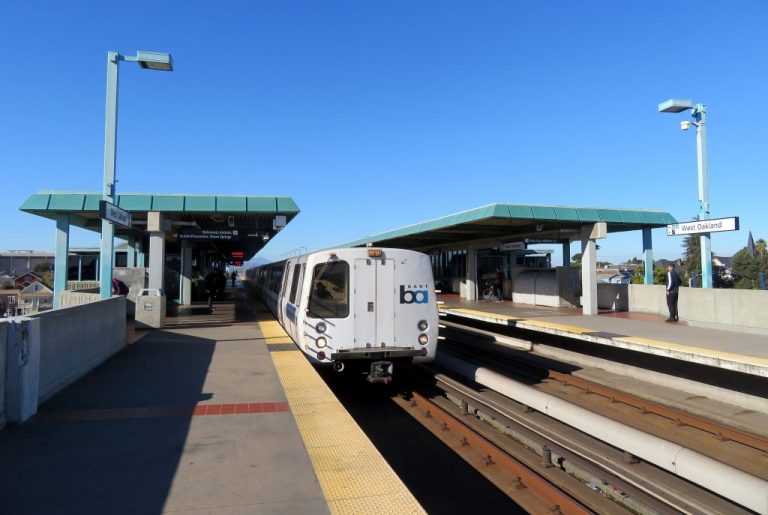Get Urban Milwaukee’s top stories delivered to you every day
A BART train at West Oakland Station, December 2018. Pi.1415926535, (CC BY-SA 3.0), via Wikimedia Commons
Every day, The Overhead Wire compiles over 1,500 stories about the city and shares the best ones with our email list. On the weekend, we take some of the most popular stories and share them with Urban Milwaukee readers. These stories are national (and international) links that are sometimes funny, sometimes silly, but we hope you’ll find them useful.
Universal Basic Mobility Pilot Expands: After the success of the first universal mobility pilot in Oakland, the program is expanding to 1,000 West Oakland residents. The program gives low-income residents a prepaid debit card with $320 to use on public transportation, Amtrak and shared mobility. The initial pilot reduced driving by 23 percent and 40 percent of participants changed the way they travel. (Terry Castleman | Los Angeles Times)
Shrinking homes and hallways: In a new study, building designers say homes will get smaller as home prices rise. With the average home size in 2024 being 116 square feet smaller than in 2023, many designers have decided to eliminate hallways to create more livable spaces. But household items like TVs and stereos have also gotten smaller, so residents don’t need as much space. (Julie Taylor | Realtor.com)
Matching roommates online: The city of Durango, Colorado, is considering using an online program similar to a dating app to match people looking for a room with homeowners willing to share. The aim is to help people find housing with compatible people and reduce friction. But before the app can be launched, more homeowners need to participate. (Christian Barney | Durango Herald)
Create cool corridors: In the heat of summer, cities can become much warmer than surrounding areas due to the urban heat island effect. To combat this, cities like Stuttgart are creating cool corridors that draw air from the countryside into the city – through green spaces, railway tracks and wide, tree-lined boulevards. Cool air stays low to the ground, so it’s key to create spaces free of buildings that restrict air flow. (Gero Reuter | Duetsche Welle)
Forgotten light rail history: Early light rail lines in the United States were built as a low-cost alternative to subways. But system plans called for greater connectivity than more recent system expansions. Uday Schultz argues that the systems’ early success in places like Calgary highlights the importance of thinking about transit as a networked system, not as individual lines on a map. (Udah Schultz | Home Signal)
Quote of the Week
“People came up to me all weekend and told me how much they loved the map and the progression of events. Being able to walk from event to event made the weekend more social. I’m honestly surprised how well this worked. This was a hypothesis I had, and this was a successful experiment.”
-Holland Denvir, founder of Los Angeles Design Weekend (LADW), speaks to Dezeen about the benefits of LADW’s walkable tour program.
On this week’s Talking Headways podcast, we speak with Tracy Hadden Loh of the Brookings Institution about the pandemic’s impact on downtowns, activity centers, and transit access. We discuss the creation of the Activity Center Cluster Map and our recent report, “Building a Better Philadelphia.”
Want to read more links? Head over to The Overhead Wire and sign up.


